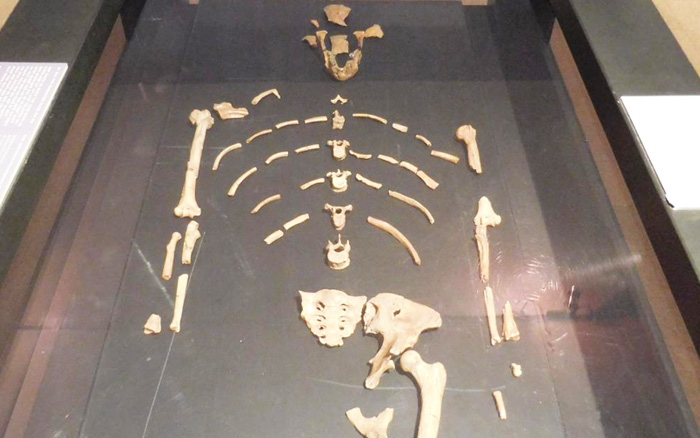Learn more about the history of human evolution through the Lucy Skeleton, a fossil discovered in Ethiopia in 1974. Today, the magnificent bone fragments are preserved at the National Museum of Ethiopia and a detailed replica is on display. What makes the Lucy Skeleton so fascinating is how well preserved it is. Fossils dating so far back are rarely more than just fragments. However, in this case, the ribs, skull, and spine pieces were found intact. Reconstructing the bones led to a wealth of scientific studies that have helped shape our understanding of the evolution process further.

During a survey led by the French Geologist, Maurice Taieb, of the Hadar region in 1974, American anthropologist Donald Johanson uncovered the upper end of a shinbone and then a femur. The pieces were evidence of an upright walking hominid more than three million years old. Lucy was discovered just 2km from the Hadar site and is the most complete skeleton, dating from that period, ever found until the unearthing of Ardi in 1992.
It is estimated that Lucy is either a direct human ancestor or evolutionary close. Reconstructions of the skeleton have revealed Lucy was just above 1 meter tall and weighed 29 kilograms, with a small skull capacity more closely resembling that of an ape rather than a modern-day human. A study of her spine curvature and knees have revealed a striking human trait, walking upright. A must-visit Plaster replicas of Lucy are found in many museums across the globe but visiting a replica skeleton in the country where she was found and in the city where she resides today is a unique experience.
In case you are wondering why would a skeleton more than three million years old be given a modern-day Western name like Lucy instead of a name intrinsic of the region where she was found. The story goes that after making the discovery, Donald Johanson was driving back to the campsite with his team and listening to Beatles on tape. When the song "Lucy in the Sky with Diamonds" came on, the team decided to name the skeleton Lucy.